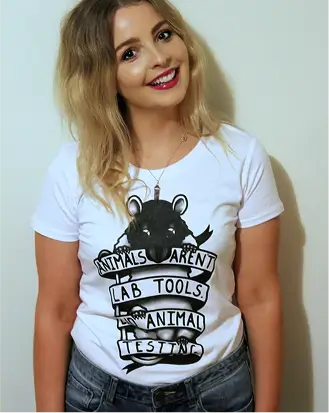Animals Used For Xenotransplantation
Xenotransplantation = transplanting organs, tissues, or cells from one species to another (usually from animals to humans). The animals used are often genetically modified first.
These types of controversial procedures have been investigated by researchers as an attempt to address the critical shortage of organs available for transplantation from human donors.
Quick facts:
- Thousands of people around the world die each year while waiting for a suitable organ transplant.
- Despite misleading headlines in news articles published all over the world, xenotransplantation isn’t the promising solution we all hope for.
- There are significant challenges and ethical concerns associated with xenotransplantation, including organ rejection, the risk of transmitting diseases from animals to humans, and the ethical implications of using animals in this way.
- In NZ, our beloved Auckland Island Pigs are seen as potential donors for xenotransplantation.1, 2
- The controversial nature of this issue means that regulations and guidelines around the use of xenotransplantation vary by country and region. In NZ, there is no specific regulation for xenotransplantation. However, since “donor animals” are genetically modified, their use and “production” are regulated in the Hazardous Substances and New Organisms Act.3
- Xenotransplantation was already considered a serious risk back in 2007 when the pharmaceutical company (LCT) applied for approval to conduct a human trial in NZ using pig cells to try and treat diabetes.4 The trial was eventually approved (see more details below).
- The Health Research Council in NZ formed a Gene Technology Advisory Committee (GTAC), which compiled guidelines for clinical trials involving xenotransplantation.5 These guidelines are mainly concerned with health risks for the public, not the animals. They require preclinical testing on at least two types of animals before human trials.
The problem
Organ transplantation is still the only treatment option for many end-stage diseases and major injuries. And even though many humans volunteer their organs for transplantation after their death, the demand outweighs the supply drastically.
For example, around 60,000 new registrations are added to transplant waiting lists in the U.S. every year,6 while there are only around 40,000 transplants performed per year.7 This gap leaves many of the over 100,000 candidates waiting in vain.8
In New Zealand, the NZ Blood Service is managing the waiting lists for organs, and they are also testing donated organs before transplantation. The number of candidates is not public, but again far exceeds donations.9
Understandably, scientists are constantly looking for ways to bridge this gap, but Xenotransplantation isn’t working.
Don’t be fooled!
Time and time again, we see the media publish misleading news about the “success” of xenotransplantation. But they rarely give the full picture…
For example, in January 2022, the news was flooded with the transplantation of a pig’s heart into a 57-year-old man.10 He was not a candidate for a donated heart, and this was his last option after having been in the hospital for weeks due to reoccurring arrhythmias and arrests.
What was celebrated as a breakthrough at the start did not last long. After the xenotransplant, the patient had been free from bed for only one day, had to have multiple surgeries (not all of them heart-related), and was taking an array of medications.
On day 49, after the operation, the xenograft started to fail, and sadly, life support was withdrawn on day 60. Postmortem findings revealed something incredibly concerning…a pig virus was present in some of the patient’s blood cells!
Xenotransplantation isn’t the answer.
Pigs are often considered the most promising candidates for xenotransplantation due to their physiological and anatomical similarities to humans. However, we know that there are crucial differences between the organs of humans and pigs.
Quick facts: The heart’s shape and orientation in the body are different between pigs and humans; only two pulmonary veins lead to the pig’s left atrium, compared to four in humans.11 Also, the average blood pressure and beats per minute are much higher in pigs.12
Key problems with xenotransplantation
1. Organ rejection is even more of a problem.
We are yet to perfect organ transplants from one human to another. In fact, the most common cause of failure with all transplants is due to an immune response to foreign cells (even when the blood type of the human patient and human donor are the same!). In other words, our bodies see the organ as a foreign object and try to fight it.13
Organs from a different species cause a stronger immune response than transplants from the same species.14 Researchers try to overcome this by genetically manipulating pigs to make their genetic material less likely to spark immune responses.15,16 But even genetically altering the animals and suppressing the recipient’s immune system isn’t enough.
2. Risk of a Zoonotic pandemic
This is one of the main reasons why xenotransplantation is so controversial globally – it creates a risk of a life-threatening pandemic (and we all know how life-changing and damaging these can be).
AIDS, BSE (Mad Cow Disease), Ebola viruses and some of the major flu epidemics, such as Avian flu and SARS, originated from cross-species contamination.17
Porcine cytomegalovirus (a virus found in pigs) is already known to affect xenotransplant survival.18
Several known zoonotic diseases are potentially dangerous for human organ recipients, and we don’t know how many more have not been discovered yet. This is a risk not only to the organ (or tissue) recipient, but the risks also extend out to the recipient’s carers, family members and the wider community.
The real solution
Due to significant advancements in medical engineering, artificial organs have the potential to address the global shortage of donor organs.19
These artificial organs can be manufactured using cutting-edge techniques like 3D printing with patient-derived cells (known as bioprinting)20 or by cultivating human cells in a controlled environment to form working heart tissue and blood vessels. These technologies are already used to create organ-chips modelling heart disease,21 and they can eventually lead to growing “mini-organs”.
Research teams worldwide have already achieved noteworthy breakthroughs in the field of organ and tissue bioprinting.
Examples include:
- A 3D organ engineering method, known as the SWIFT (Sacrificial Writing into Functional Tissue) technique, has been developed by a team at Harvard University. This innovative approach enables the 3D printing of a network resembling blood vessels using thousands of patient-derived cells. The presence of these blood vessel networks is critical for successful transplantation, ensuring the delivery of oxygen and nutrients to all tissues.22
- Australian researchers showed that stem cells could be grown into kidney tissue and have the potential to be used for the regeneration of damaged kidneys.23
- Further work on developing artificial kidneys is being funded through the KidneyX initiative, a public-private partnership between the American Society of Nephrology (ASN) and the U.S. Department of Health and Human Services (HHS).24 Part of the research into making this usable for humans is done at Wake Forest University25 and the University of California.26
- In France, researchers are currently (Oct 2023) recruiting for a clinical trial of an artificial heart.27 Current international research into a novelty coating is improving the artificial heart’s properties.28
We still have a long way to go before options like these are readily available for humans, but this is the type of solution that researchers need to be focused on, not xenotransplantation.
Artificial organs offer distinct advantages compared to traditional xenotransplantation. They are ethically sourced, fully biocompatible with a reduced risk of rejection, and carry no risk of infections from other species.
Other solutions include:
- Artificial heart / ventricular assist devices. These are electromechanical constructs that help the heart do its job. While long-term survival with these devices is still lower than with a donor heart transplant,29 technological advances and 5-year survival are comparable already.19
- Regenerative therapies. Here, researchers focus on using stem-cell therapies to repair the damaged organ.30 There are still problems to solve regarding the delivery method and efficiency,31 but this approach has potential.32
Xenotransplantation in NZ
We’ve discovered research involving animal-animal xenotransplantation that has taken place in NZ. For example, newborn piglets were killed, and cells from their pancreas were implanted into young mice.33
A group of pigs who were taken from Auckland Island in 1999 have also been used for xenotransplantation.
Examples include:
- Encapsulated pig pancreatic islet cells were transplanted into human patients to try and treat type 1 diabetes.34
- Cells from the brains of newborn pigs were implanted into the brains of various animals to test the effect against several human diseases (for example, Parkinson’s disease35,36 and stroke,37,38 Huntington’s disease,39,40
- Based on animal studies, human trials were approved using the brain cells of newborn piglets. These were implanted into humans to try and treat Parkinson’s disease.41
- Pigs were genetically modified to try to increase the chances of their kidneys being accepted by humans.42
Auckland Island pigs became desirable research subjects as they hadn’t been exposed to the pathogens and diseases that other pigs in non-isolated areas had. This meant a breeding facility was established so that more ‘test subjects’ could be created. Learn more about them here.
What you can do
Become an organ or tissue donor (if you can!)
Information about organ and tissue donation in NZ can be found below.
Prioritise your health (if you can!)
Many people underestimate the power everyday life has on their health. Prevention and even reversal of heart disease could be achieved for millions of patients by shifting their diet away from high cholesterol and saturated fat and more towards plant-based foods.43
Combined with moderate regular exercise, research has shown patients with moderate to severe heart disease have improved blood flow to the heart within a month. After a year, even severely affected arteries had improved.44
Learn more about xenotransplantation
- https://www.stuff.co.nz/national/127473432/southlandbased-pigs-move-closer-to-saving-lives-after-first-heart-transplant-from-pig-in-us
- https://www.wired.com/story/new-zealand-pig-organ-transplant/
- https://www.legislation.govt.nz/act/public/1996/0030/latest/whole.html#DLM3159604
- https://www.beehive.govt.nz/release/proper-process-xenotransplantation
- https://www.hrc.govt.nz/resources/gtac-guidelines-xenotransplantation
- https://optn.transplant.hrsa.gov/data/view-data-reports/national-data/
- https://optn.transplant.hrsa.gov/data/view-data-reports/national-data/
- https://optn.transplant.hrsa.gov/data/view-data-reports/national-data/
- https://www.nzblood.co.nz/tissue-and-organ-donations
- https://doi.org/10.1056/NEJMoa2201422
- https://doi.org/10.1046/j.1469-7580.1998.19310105.x
- https://doi.org/10.1016/j.pharmthera.2013.10.007
- https://doi.org/10.3390/biology12010061
- https://doi.org/10.3389/fimmu.2022.899657
- https://doi.org/10.1007/s13353-013-0156-y
- https://doi.org/10.1007/s13205-018-1107-4
- https://doi.org/10.3390%2Fmicroorganisms8091405
- https://doi.org/10.1038/s41598-020-73150-9
- https://doi.org/10.21037/acs-2020-cfmcs-fs-197
- https://doi.org/10.1126/science.aav9051
- https://doi.org/10.5483/BMBRep.2022-0185
- https://doi.org/10.1126/sciadv.aaw2459
- https://doi.org/10.1038/ncb2894
- https://www.kidneyx.org/prize-competitions/
- https://school.wakehealth.edu/features/awards-and-recognition-results/anthony-atala-md-and-wfirm-team-awarded-1-million-from-kidneyx
- https://pharmacy.ucsf.edu/news/2021/09/kidney-project-successfully-tests-prototype-bioartificial-kidney
- https://clinicaltrials.gov/ct2/show/NCT04475393
- https://doi.org/10.3389/fbioe.2023.1167340
- https://doi.org/10.1016/j.athoracsur.2017.08.057
- https://doi.org/10.1038/s41536-021-00140-4
- https://doi.org/10.3390/ijms23179886
- https://doi.org/10.3389/fcvm.2022.961920
- https://doi.org/10.1002/jbm.b.33185
- https://clinicaltrials.gov/study/NCT00940173
- https://doi.org/10.2217/rme.11.15 (since redacted for lack of proof for the results)
- https://doi.org/10.3233/jpd-130214
- https://doi.org/10.1097/01.wnr.0000133298.84901.cf
- https://doi.org/10.1161/01.str.0000138954.25825.0b
- https://doi.org/10.1097/00001756-200411150-00018
- https://doi.org/10.1016/j.nbd.2006.04.014
- https://doi.org/10.1016/j.parkreldis.2018.11.015
- http://nzeno.nz/scientific-basis/
- https://www.mdedge.com/familymedicine/article/183205/strategy-arrest-and-reverse-coronary-artery-disease-5-year
- https://doi.org/10.1001/jama.280.23.2001





